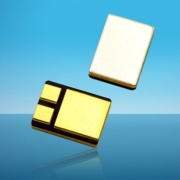Flosfia paves the way for Ga-O Power transistor
Flosfia Inc and a research group of Kyoto University succeeded in making a p-type layer necessary for realizing an “gallium oxide” (Ga2O3)-based power transistor.
Flosfia is a venture firm based in Kyoto, Japan, and the research group is led by Shizuo Fujita and Kentaro Kaneko, professor and assistant professor, respectively, of the Graduate School of Engineering and Faculty of Engineering, Kyoto University.
Gallium oxide is drawing attention as a material that potentially enables to make a power device with a higher withstand voltage, lower loss and lower cost than SiC (silicon carbide) and GaN (gallium nitride), which are being developed as the next-generation power semiconductor materials.
This time, the researchers used the “α-type” gallium oxide, which has a crystalline structure called “corundum.” They realized the p-type layer by using iridium oxide (Ir2O3), which has the same corundum structure as the α-type gallium oxide, making it possible to form a gallium oxide-based power MOSFET.
N- and p-type layers are necessary for realizing a power MOSFET, and it has been very difficult to make a high-quality p-type layer by using gallium oxide.
This time, Flosfia and the research group focused on iridium oxide. It has the same corundum structure as the α-type gallium oxide, and the difference in lattice constant between them is as small as 0.3%. And the researchers consider that it is possible to make a power MOSFET by using n-type gallium oxide and p-type iridium oxide. Flosfia aims to ship samples of a gallium oxide-based MOSFET in 2018.
Flosfia makes the “α-type” gallium oxide by using the “Mist Epitaxy” method. And the same method can be applied to iridium oxide, the company said. The method was developed by combining the company’s own technologies such as a technology to reduce impurity concentration and a multi-layer technology based on the “Mist CVD” method developed by Fujita and others. The Mist Epitaxy method eliminates the need for expensive vacuum devices.
The p-type characteristics of iridium oxide were confirmed by hall effect measurement. Its hall mobility and carrier concentration were 2.3cm2/Vs and 1.0 x 1021/cm3, respectively. Its corundum structure was confirmed by X-ray diffraction profile and diffraction spot.











Trackbacks & Pingbacks
[…] FLOSFIA is a start-up working on a new wide band gap material: Gallium-Oxide. It’s a spin-off from Kyoto University created in 2013. The company develops what they call a “α-type” Gallium-oxide structure. Professor Shizuo Fujita from Kyoto University developed first this new material. It provides a band gap of 5.3eV, much wider than other semiconductor wide band gap material. You can find more information about FLOSFIA in our last news on the subject. […]
Leave a Reply
Want to join the discussion?Feel free to contribute!